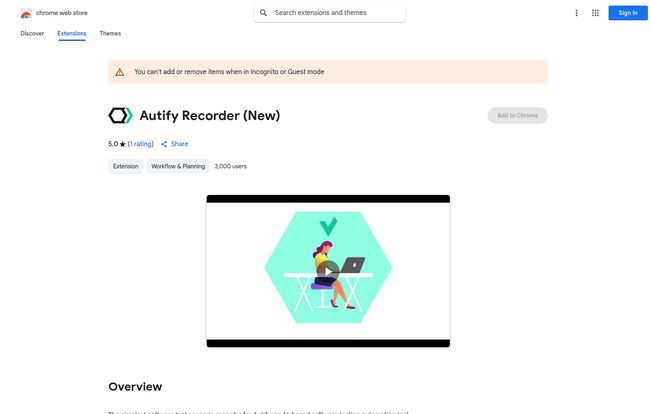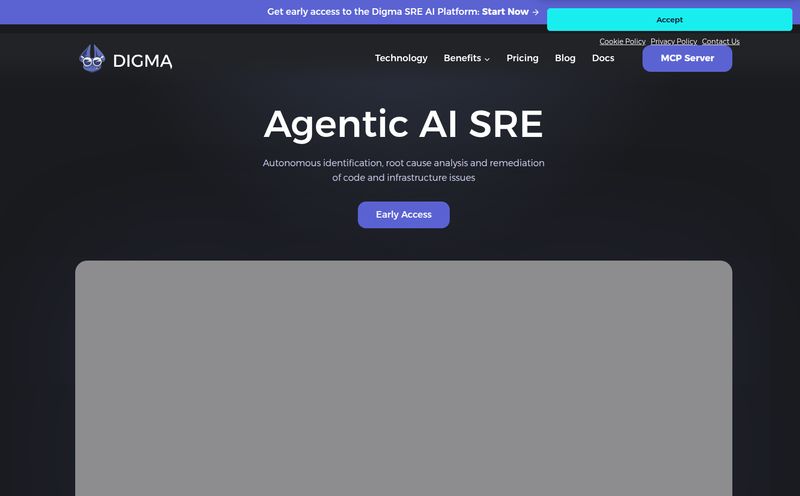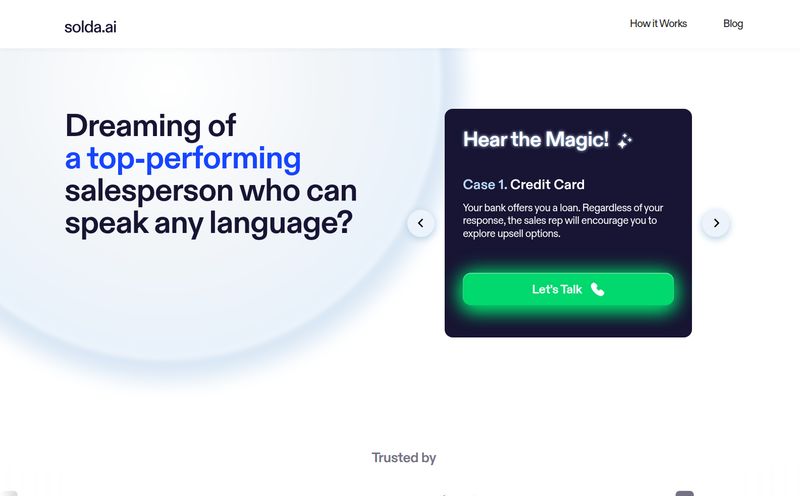If you've ever been on a software team, you know the special kind of dread that comes with release day. It’s not the deployment itself, it's the hours—no, days—of manual regression testing that precedes it. Click this, check that, fill out this form, make sure that modal still pops. It’s a soul-crushing, error-prone process that feels like it was designed by a committee of sadists.
For years, we've tried to automate it. We built brittle Selenium scripts that would shatter if a developer so much as looked at a CSS class the wrong way. We’ve had rockstar QA engineers spend weeks building frameworks that become obsolete the moment the next big feature drops. I’ve seen it all, and frankly, I've become a bit of a cynic about “game-changing” QA tools.
So when I first heard about Autify, an “AI-powered quality engineering platform,” my internal skeptic raised a very prominent eyebrow. Another magic bullet? Sure. But I decided to give it a fair shake, and, well, I’m here to report back. And I've got some thoughts.
So, What Is Autify, Really?
Strip away the buzzwords, and Autify is a pretty clever platform designed to take the sting out of test automation. At its core, it’s a no-code tool that lets you build automated tests for your web and mobile apps simply by recording your actions. You install their Chrome extension, click through a user journey on your site, and Autify turns that into a repeatable test script. Easy peasy.
But the secret sauce isn’t just the recording. It's the AI working behind the scenes. Think of it less as a simple macro recorder and more like a junior QA apprentice who watches what you do, understands the intent, and can even adapt when things change. It’s a pretty compelling idea.
The main way you’ll interact with it initially is through the Autify Recorder, a simple Chrome Extension. This is your gateway into the whole ecosystem.

Visit Autify
And for my fellow tech nerds who are immediately suspicious of proprietary black boxes, you can breathe a little easier. Autify has built its platform on top of Playwright, Microsoft’s open-source automation framework. This is a huge green flag for me. It means the foundation is solid, modern, and capable, not some home-brewed solution that might not keep up with modern web standards.
The Features That Genuinely Make a Difference
A feature list is just a feature list until you see how it actually solves a problem. Here’s the stuff that stood out to me during my time with the platform.
The AI "Magic": Self-Healing Tests
This is the headline act, and for good reason. Anyone who has maintained a test suite knows the pain. A developer changes a button’s ID from `#submit-button` to `#checkout-submit`, and suddenly, half your tests fail. It’s infuriating. Autify’s AI tries to solve this with what they call "self-healing." Instead of relying on a single, fragile locator, its AI looks at a bunch of attributes of an element. If one thing changes, like the ID, the AI can still recognize the button based on its text, its position on the page, its class, etc. It’s like recognizing a friend even after they get a new haircut. In practice, this dramatically reduces the amount of time you spend fixing broken tests and, more importantly, it builds trust in your automation suite.
No-Code Simplicity for Everyone
The no-code interface is a massive win for team collaboration. Your product managers, manual QA folks, or even UX designers can create and understand tests without needing to learn JavaScript or Python. This democratizes testing. It stops being this dark art practiced by a few specialists and becomes a team-wide responsibility. I’ve seen this bridge communication gaps and catch bugs way earlier in the process, which is always a good thing.
GenAI for Generating Test Cases
Okay, this is the new, flashy feature. Autify now includes a GenAI component that can help generate test case ideas and even the test code itself. My take? It's a fantastic starting point. It’s great for brainstorming edge cases you might not have considered. Is it going to completely replace a thoughtful QA professional? Absolutely not. You still need a human brain to understand context and business logic. But as a creative partner to get you 80% of the way there, it’s surprisingly effective.
My Experience: The Good, The Bad, and The AI
Alright, let's get into the nitty-gritty. Using a tool is always different from reading the brochure. The biggest win for me was the sheer speed. What would normally take a day of writing finicky code could be roughed out in an hour of clicking around. That's a huge return.
But it's not a perfect utopia of automated bliss. For one, “no-code” doesn’t mean “no-thought.” You still need a solid testing strategy. The tool is only as good as the user flows you feed it. If you record messy, illogical tests, you’ll get messy, illogical results. Garbage in, garbage out, as they say.
And while the AI is smart, it’s not omniscient. It's an assistant, not a replacement. You still need to monitor the tests and occasionally give it a nudge in the right direction when it gets confused by a major UI overhaul. Don't fire your QA team just yet; empower them with a better tool.
Then there’s the elephant in the room: pricing. Autify doesn't list their prices publicly. You have to go through the classic “Contact Sales for a Demo” process. As someone who lives and breathes online business, this usually signals a few things: it's aimed at the B2B/enterprise market, pricing is customized, and it's probably not going to be the cheapest option on teh market. This isn't necessarily a bad thing—you often get better support and a more robust platform—but it’s something to be aware of if you’re a small startup on a tight budget.
Who Is Autify For? (And Who Should Probably Skip It?)
After kicking the tires, I have a pretty clear idea of who would get the most out of Autify.
It seems like a fantastic fit for agile teams in mid-to-large-sized companies that have rapid development cycles. If you're constantly pushing updates and your regression suite is a major bottleneck, Autify could be a lifesaver. It’s also great for teams with a mix of technical and non-technical people involved in quality assurance.
Who should maybe look elsewhere? If you're a solo developer working on a small personal project, this might be overkill. The cost and setup, while not immense, are probably more than you need. Similarly, if your application is an incredibly complex legacy system with tons of non-standard controls, the AI might struggle more than it's worth.
Frequently Asked Questions about Autify
Is Autify just for web testing?
Nope! While its web automation is a core feature, Autify also provides no-code mobile test automation for both iOS and Android. This allows you to maintain quality across your entire digital presence from a single platform.
Do I need to know how to code to use Autify?
For the most part, no. The platform is designed around a no-code, record-and-playback workflow. That said, having a basic understanding of how web elements work and what makes a good test case will help you get the most out of it.
What is Autify built on?
Autify's web automation capabilities are built on top of Playwright, a powerful and modern browser automation framework developed by Microsoft. This provides a reliable and scalable foundation for the AI features.
How much does Autify actually cost?
This is the big question! Autify doesn't have public pricing plans listed on their website. To get pricing information, you need to contact their sales team for a demo and a custom quote based on your team's size and needs.
How is Autify different from tools like Selenium or Cypress?
Selenium and Cypress are code-first automation frameworks. They are incredibly powerful but require programming knowledge to write and maintain tests. Autify operates at a higher level, adding a no-code interface and an AI layer on top of a powerful framework (Playwright) to make test creation faster and maintenance easier, especially for non-coders.
Does the 'self-healing' feature really work?
In my experience, yes, for the most part. It’s very effective at handling minor to moderate changes in the UI—like changed class names, element IDs, or button text. For a complete page redesign, you'll likely need to do some manual re-recording, but for the everyday churn of agile development, it saves a significant amount of time.
So, is Autify the Future of QA?
I’m not ready to call it the singularity of software testing just yet, but Autify is a serious contender and a definite sign of where the industry is heading. It successfully lowers the barrier to entry for test automation and tackles the single most annoying part of the process: maintenance.
It isn’t a magic wand that eliminates the need for careful thought, but it is a massive accelerator. It's a power tool that can turn a week-long regression testing slog into an afternoon of automated checks. If your team is feeling the pain of manual testing, I’d say Autify is absolutely worth booking a demo for. Just be ready to have that chat with sales.



